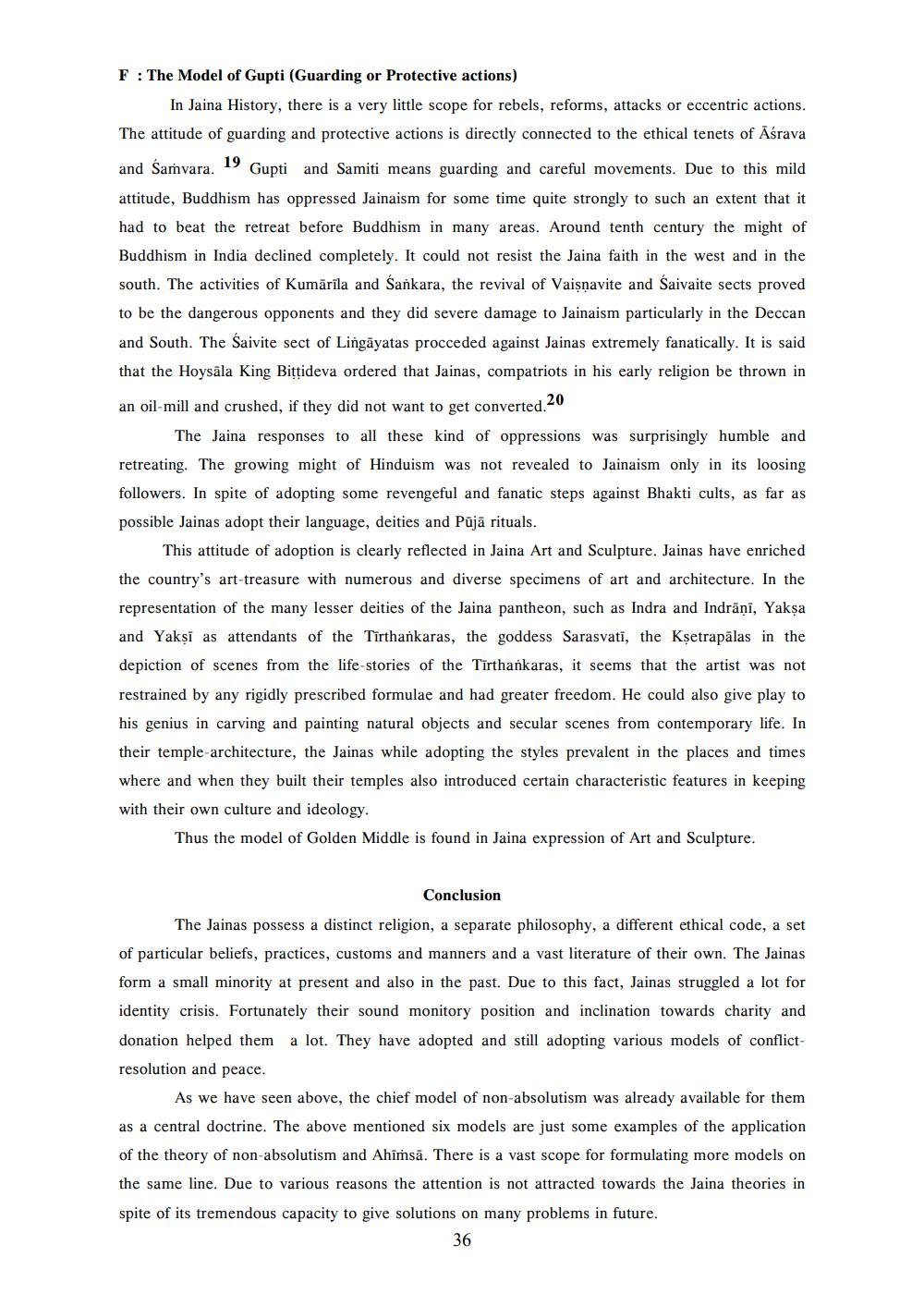________________
F: The Model of Gupti (Guarding or Protective actions)
In Jaina History, there is a very little scope for rebels, reforms, attacks or eccentric actions. The attitude of guarding and protective actions is directly connected to the ethical tenets of Aśrava
and Samvara. 19 Gupti and Samiti means guarding and careful movements. Due to this mild attitude, Buddhism has oppressed Jainaism for some time quite strongly to such an extent that it had to beat the retreat before Buddhism in many areas. Around tenth century the might of Buddhism in India declined completely. It could not resist the Jaina faith in the west and in the south. The activities of Kumārīla and Sankara, the revival of Vaişnavite and Saivaite sects proved to be the dangerous opponents and they did severe damage to Jainaism particularly in the Deccan and South. The Saivite sect of Lingāyatas procceded against Jainas extremely fanatically. It is said that the Hoysāla King Bittideva ordered that Jainas, compatriots in his early religion be thrown in
an oil-mill and crushed, if they did not want to get converted. 20
The Jaina responses to all these kind of oppressions was surprisingly humble and retreating. The growing might of Hinduism was not revealed to Jainaism only in its loosing followers. In spite of adopting some revengeful and fanatic steps against Bhakti cults, as far as possible Jainas adopt their language, deities and Püjā rituals.
This attitude of adoption is clearly reflected in Jaina Art and Sculpture. Jainas have enriched the country's art-treasure with numerous and diverse specimens of art and architecture. In the representation of the many lesser deities of the Jaina pantheon, such as Indra and Indrāni, Yaksa and Yaksi as attendants of the Tīrthankaras, the goddess Sarasvati, the Kşetrapālas in the depiction of scenes from the life-stories of the Tīrthankaras, it seems that the artist was not restrained by any rigidly prescribed formulae and had greater freedom. He could also give play to his genius in carving and painting natural objects and secular scenes from contemporary life. In their temple-architecture, the Jainas while adopting the styles prevalent in the places and times where and when they built their temples also introduced certain characteristic features in keeping with their own culture and ideology.
Thus the model of Golden Middle is found in Jaina expression of Art and Sculpture.
Conclusion The Jainas possess a distinct religion, a separate philosophy, a different ethical code, a set of particular beliefs, practices, customs and manners and a vast literature of their own. The Jainas form a small minority at present and also in the past. Due to this fact, Jainas struggled a lot for identity crisis. Fortunately their sound monitory position and inclination towards charity and donation helped them a lot. They have adopted and still adopting various models of conflictresolution and peace.
As we have seen above, the chief model of non-absolutism was already available for them as a central doctrine. The above mentioned six models are just some examples of the application of the theory of non-absolutism and Ahīṁsā. There is a vast scope for formulating more models on the same line. Due to various reasons the attention is not attracted towards the Jaina theories in spite of its tremendous capacity to give solutions on many problems in future.
36




